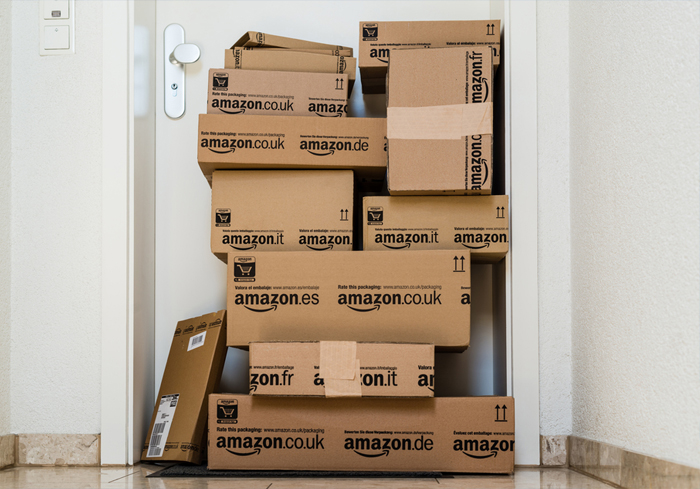
When one gets on a hot streak like the one Amazon has been on for the last several weeks, it can be hard to remember baseball great Connie Mack’s sage advice: You can’t win them all. Because no matter how big, smart or powerful a merchant happens to be, there is simply no such thing as batting a thousand.
Still, with Amazon’s big moves stacking on top of bigger moves this summer, it might have been easy to believe that a thousand was all the eCommerce retailer knew how to bat. In fact, a brief early trading day pop in Amazon’s share price of about 1 percent was enough to make Jeff Bezos literally the richest man in the world — besting current crown holder Bill Gates. Bezos’ net worth clocked in at $90.6 billion, compared with a scant $90 billion for Mr. Gates. Bezos’ rule as world’s richest man was short. Even before Amazon’s earnings came in, Gates had retaken his still-warm crown.
And then the Wall Street news rolled in and … while there was plenty of good news, a big miss on Amazon’s earnings surely got investors’ attention.
By the Numbers
Amazon’s earnings per share clocked in at $0.40 last quarter, a big miss on the $1.42 analysts were expecting. Revenue, on the other hand, notched a slight beat — $37.96 billion vs. the $37.18 billion Wall Street analysts were expecting and a 25 percent year-over-year pick-up.
But that big pick-up in sales came along with a drop-off in profitability. Amazon posted a 77 percent drop in quarterly income.
“As investors, everyone knows that Amazon really doesn’t care about the bottom line,” Michael Yoshikami, founder of Destination Wealth Management, said on CNBC’s Closing Bell. “What you’re buying it for is top-line growth, revenue growth, market share — and I suspect when you go through the numbers you’re going to see Amazon is making great progress.”
Speaking of great progress — AWS (Amazon Web Services) and subscription services held sway.
Subscription sales (which include Prime fees) rose 51 percent in the second quarter to $2.2 billion. According to Cowen, over 50 percent of U.S. households will have a Prime membership by the end of this year. That’s not a big leap, since at 85 million members, and assuming that the typical American household includes 2.2 people, just about every household that wants to leverage a Prime subscription can probably do so today.
AWS carries on the firm’s main driver of growth, expanding 42 percent year over year and generating $916 million in operating income (more than doubling Amazon’s North American businesses $436 million in operating income).
As for what’s next, that’s what left investors less than thrilled — Amazon’s third-quarter guidance suggests a $400 million loss on $300 million in profit.
“Q3 is generally a high investment period,” Chief Financial Officer Brian Olsavsky said on the earnings call, noting that spending, fulfillment and hiring would be primary as the eCommerce giant prepares for the holiday retail rush.
What’s Next
Of particular interest for Amazon watchers is the forthcoming $13.7 billion acquisition of Whole Foods (set to close later this year, pending regulatory approval). But those looking for specific details were likely disappointed, as Olsavsky had little to offer outside of some general comments.
“We really think it will be a big boost for us as we expand our grocery and consumables offering.”
Amazon Web Services is looking at expansion, Olsavsky told analysts, saying that the subsidiary will expand in France, Sweden and China in the near future — though no specific date was given.
Echo got a nod — though not much in the way of specific data.
“It’s early on the Echo Show. As you know, we just started shipping those in late June, but we’re very excited about the potential and the addition of the video screen and the messaging capability and video capability. So it’s – I’ve used mine, it’s awesome. It’s a big step up in my mind, but we’ll get more customer feedback as we go along,” Olsavsky noted.
He also noted that Echo is working in tandem with some of Amazon’s other efforts — like physical bookstores.
“I would say that the benefit there is again, we have a curated selection of titles and it’s also a great opportunity for people to touch and feel our devices and see them, especially the new Echo devices. I went into the store in Seattle last week and I saw about a third of the people were standing around the device table learning how they work, how they interact with devices. So, I saw firsthand the customer experience, I think, that’s what we’re seeing as a benefit to the physical stores right now.”
Despite the drop in Amazon stock price — and some grumbles from investors on the retailer’s mixed profit picture — analysts on the whole indicated a willingness to be somewhat patient with Amazon. Bezos has always said that Amazon plays the long game and invests in retail products around a five- to seven-year timeframe — at a minimum.
For example, Alexa will celebrate her third birthday in November, and it has captured 70 percent, already, of the voice-activated speaker market. A market that is still young, but one that 14 percent of the consumers we surveyed in our How We Will Pay study say they own and use — even to conduct commerce.
“The fact that they are investing on so many fronts right now just speaks to the opportunity that they have before them,” said Edward Jones Analyst Josh Olson. “We are giving them the benefit of doubt here because they have executed so well historically.”